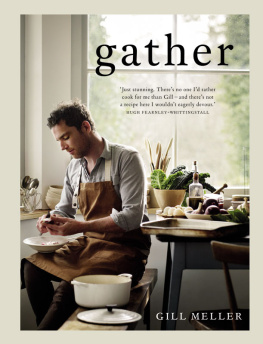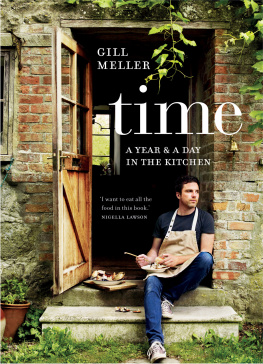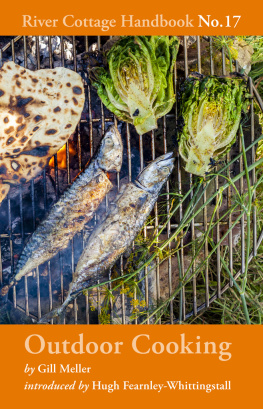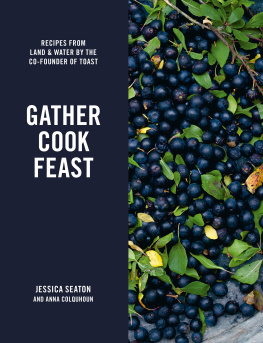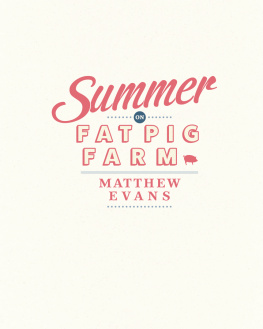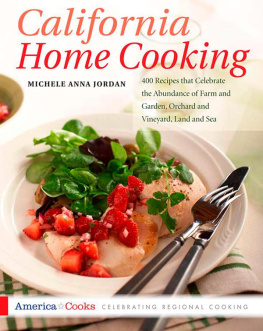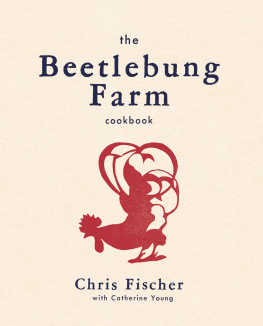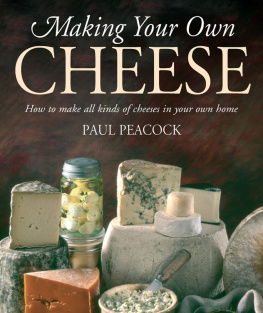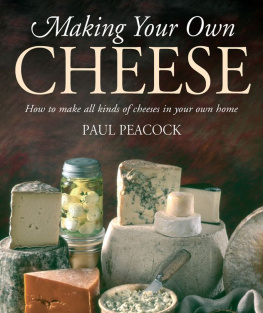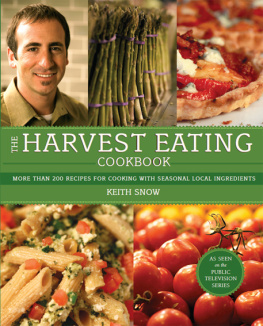introduction
Ive always liked the word gather. It feels hopeful; natural and very human. Itsa word that embodies many of the simple things we do every day. As people, we gatherin one way or another all the time. Its what we do.
Our early ancestors were known as hunter-gatherers. They thrived on food from thelandscapes that surrounded them: nuts and fruits from the ancient woodlands; fish,seafood and sea weeds from the coastline; plants and herbs from the hedgerows andriverbanks; and meat from the forests and fields.
Each landscape provided them with the diverse range of foods they needed to developstrong, healthy family groups. Our early understanding of wild foods (both plantsand animals) led to their cultivation and domestication and the growth of agriculturalsocieties as we know them today. Inspite of this, I think we all still harbour thatprimitive characteristic to gather, as well as a deep connection to the landscapeswe live in.
The reality is, we all have to eat. Few of us can go around picking berries and trackingdeer. Between checking emails and doing the school run theres no time. That said,we still gather we still make a considered motion to collect and assemble ingredients:a loaf of bread; fruit from the greengrocer; cheese; a jar of honey. We lift themin our arms and take them home. In many cases we present them to someone and sharethem.
The way we gather has evolved, and perhaps inevitably our modern ways have meantweve lost a handle on where our food comes from. And our modern way of eating canmean that, quite often, we dont spend enough time together enjoying a meal.
This multilayered word, gather, with all its significance and implications, hashelped me find a way to make the most of the food that I eat with my family and friends.Its given me a path to tread that makes sense to me as a cook, and its given mea genuine appreciation for the happiness that sharing food with other people canbring.
My own gatherings release me, for a time, from the four walls of my kitchen. Theytake me beyond the door of the supermarket, and away from the noise of the citiesand towns. I go out into the light and air of the landscapes that surround me, becauseI believe that sometimes the best way to get great ingredients is by going directlyto the source.
Ive always been fascinated by the language of our food-producing landscapes throughthe year. The stop and start of the lands seasonal output intrigues me. The paceof change, the aesthetic of time, of weather and of light. The flood, the ebb, thedisparity in the garden from dawn to dusk. The clarity of frost, the haze of thehigh-summer harvest, the bleak beauty of February in contrast to the breathtakingpanoply of autumns hues. Every time, every year. Its my clock to cook by. For me,landscapes can evoke memories and awaken the senses in the same way food can. A fieldof barley reminds me of malt, and my fathers tobacco. The heady air of wild garlicin a spring woodland goes hand in hand with the prickly sting of green-barbed nettles,and I recall the endless potions, lotions and concoctions I used to simmer up overcampfires as a child. Whether or not these early experiments with fire and food formedthe bedrock for my love of seasonal cooking is hard to say, but they certainly helpedme develop my curiosity about what landscapes could offer at particular times ofyear.
I remember, one autumn day when I was nine or ten years old, my friend and I pickeda couple of handfuls of field mushrooms. We climbed up an old beech tree and madea small fire in the hollow where the big limbs met the trunk. We cooked the mushrooms,smoky and blistered, and we ate them in the branches of the tree. We had no ideawhether they were edible! When I eat mushrooms nowadays I always remember this. Iam thankful to be alive, but even more thankful for the memory and the connectionwith the landscape that I made that day.
The majority of our modern landscapes are now managed, and many far more intensivelythan they should be. But happily there are still places where the ingredients haventchanged much at all. Over the years and throughout my culinary career, Ive beenfortunate enough to meet and work with many food producers. There are few simpler,more honest ways to support oneself than working with raw and real ingredients inan ethical and sustainable way. These heroes of food production have a perceptiveunderstanding of the environment and a direct responsibility to care for and nurturetheir landscape and its nature, in all its splendid degrees, in both a respectfuland a considered way. They know that we are all the benefactors.
These remarkable people are as much a part of the evening supper I enjoy to cookand eat, as they are part of their own ever-changing seasonal landscape. The fisherman,the sheep farmer, the gardener these individuals are the soul and sap of any industriouskitchen, the blood and bones behind all those prime cuts in the butchers shop andthe colour and crunch behind the salads, herbs and vegetables Ive just picked upfor the weekend.
This book isnt just about the provenance of ingredients. Its not necessarily aboutthe people who grow, catch, farm, harvest or collect them either. Its not even aboutthe landscapes. It is, more or less, a collection of simple recipes I love to cook,centred on a group of seasonal ingredients of which Im particularly fond. Throughthese ingredients I hope to give every home cook an idea of context; a sense of theproductive and beautiful places these foods come from. Im sure many of them areingredients you spend time preparing in your kitchen, too.

